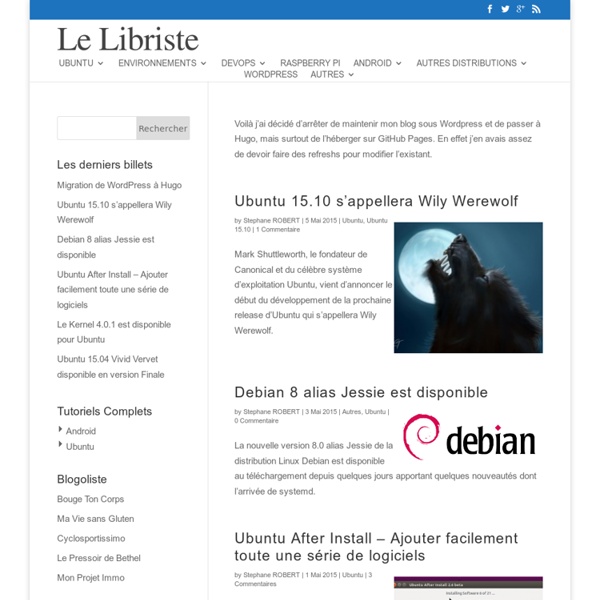



Open Source, Geo & Health Workshop (#gecohealth) Invalid quantity. Please enter a quantity of 1 or more. The quantity you chose exceeds the quantity available. Raw socket in Linux Contents : Introduction How to send packets using raw socketsHow to receive packets using raw sockets Introduction Hi this post is for those who are already familiar with basics of sockets, The raw sockets are use to access the raw data at application layer, normally tcp-ip stack in linux removes all the header and only the data is available at the application layer, but some times it is more convenient and easy to implement the new protocol or processing of some protocol at the application layer, instead of putting code in the kernel, Lets get into the practical examples.
Princeton study: Nighttime images help track disease from the sky Public release date: 8-Dec-2011 [ Print | E-mail Share ] [ Close Window ] Contact: Morgan Kellymgnkelly@princeton.edu 609-258-5729Princeton University Normally used to spot where people live, satellite images of nighttime lights can help keep tabs on the diseases festering among them, too, according to new research. Tools for creating TCP/IP packets hping ( hping is a command-line oriented TCP/IP packet assembler/analyzer. The interface is inspired to the ping(8) unix command, but hping isn't only able to send ICMP echo requests. It supports TCP, UDP, ICMP and RAW-IP protocols, has a traceroute mode, the ability to send files between a covered channel, and many other features Features include: * Firewall testing * Advanced port scanning * Network testing, using different protocols, TOS, fragmentation * Manual path MTU discovery * Advanced traceroute, under all the supported protocols * Remote OS fingerprinting * Remote uptime guessing * TCP/IP stacks auditing * hping can also be useful to students that are learning TCP/IP Hping works on the following unix-like systems: Linux, FreeBSD, NetBSD, OpenBSD, Solaris, MacOs X, Windows.
An Atlas of Cyberspaces This is an atlas of maps and graphic representations of the geographies of the new electronic territories of the Internet, the World-Wide Web and other emerging Cyberspaces. These maps of Cyberspaces - cybermaps - help us visualise and comprehend the new digital landscapes beyond our computer screen, in the wires of the global communications networks and vast online information resources. The cybermaps, like maps of the real-world, help us navigate the new information landscapes, as well being objects of aesthetic interest. Top 100 of the Best (Useful) OpenSource Applications The following is a list of about 100 of the best OpenSource Applications, that actually help make Linux more usable for people. It is my hope that this list shows potential Linux users that there really is a large, effective, productive and usable range of free, OpenSource applications.
100+ Sites to Download All Sorts of Things These days you can find all sorts of things online, from audio books to flash files, from sound effects to CSS templates. Below we compiled a list with over 100 download sites that serve that purpose. We will also try to keep the list updated, so if your favorite download site is not here, let us know about it with a comment. Audio Books GNU/Linux Distribution Timeline After a short essay on methodology we’re curious to find out whether there are any master-snoops among our audience. We present exhibit M, a rare specimen we know nothing about but for the fact that it was compiled from bits of Gentoo. Hence we call publicly for any hints or leads regarding this elusive distribution! Meanwhile, a gentle reader has drawn to our attention the fact that Damn Vulnerable Linux is currently listed as a Slax derivate by the major pundit places, while it certainly boasted a Damn Small Linux pedigree in it’s very beginnings. The switch has happened, but everyone claims not to have seen when it did!
Deep Web Research 2010 Bots, Blogs and News Aggregators is a keynote presentation that I have been delivering over the last several years, and much of my information comes from the extensive research that I have completed over the years into the "invisible" or what I like to call the "deep" web. The Deep Web covers somewhere in the vicinity of 1 trillion pages of information located through the world wide web in various files and formats that the current search engines on the Internet either cannot find or have difficulty accessing. The current search engines find about 200 billion pages at the present time of this writing.